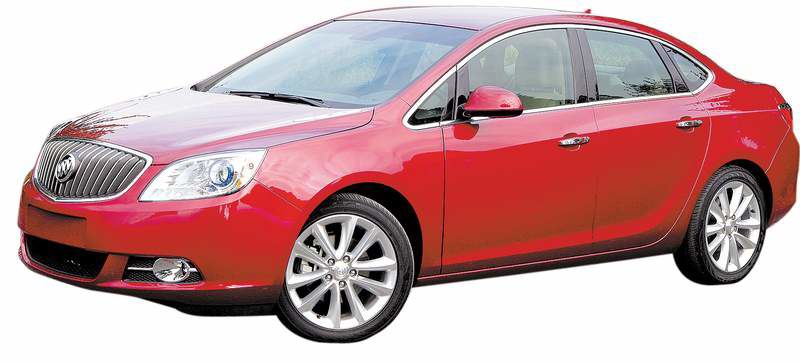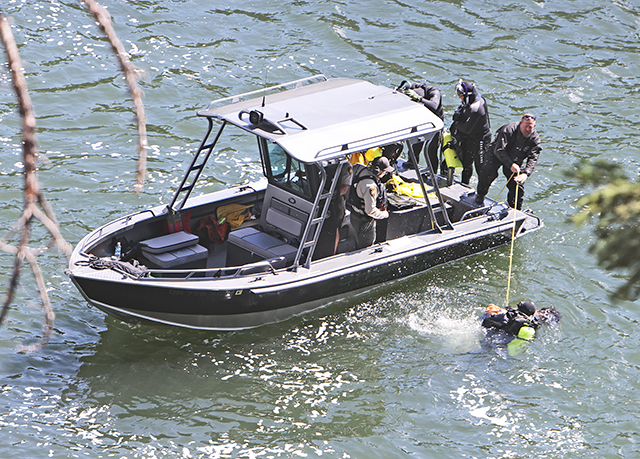Balance the goal with Verano
Published 4:00 am Sunday, December 25, 2011

- The 2012 Buick Verano luxury compact is the latest indication that Buick's confidence is back as the General Motors division asks buyers to consider the Verano an equal to small cars from prestigious brands like Audi and Volvo.
For a brand that ceased to be bold long ago, Buick is making a rather audacious request with its newest car, the 2012 Verano: Would you please consider it the equal of small cars from prestigious brands like Audi and Volvo?
Buick has struggled for a couple of decades, helped not a bit by a mishmash of vehicles and marketing strategies that left many car buyers nonplussed. But there are signs that the General Motors division is on the upswing, and the Verano luxury compact is the latest indication that corporate confidence is back, along with a new willingness to take a gamble.
Trending
Buick’s resurgence began with the 2008 Enclave, a seven- or eight-passenger crossover admired for its competence. Then came well-regarded new versions of the midsize LaCrosse and Regal sedans. Memories of less than stellar Buicks like the Skylark, the division’s last compact car, have grown dim.
The Verano is aimed at cars like the Audi A3 and Volvo C30 that are exploring the question of whether Americans will pay premium prices for upscale compacts. For Audi and Volvo this remains a test without a final grade: combined sales of the A3 and C30 were only 10,500 last year.
Buick, which is feeling pretty good about itself, wants to take the exam, too.
The Verano starts at $23,470, and a fully optioned model is about $29,000 with leather upholstery, heated steering wheel and front seats, sunroof, navigation system and fancy stereo.
A comparably equipped A3 or C30 would easily cost $3,000 or $4,000 more.
Buick could not afford to start its experiment with a clean-slate design, so the Verano was engineered from the existing Chevrolet Cruze.
Trending
“The basic structure underneath is similar to the Cruze,” said Jim Federico, the GM vehicle line executive for global compact cars.
But the starting point and the ending point are far apart, Federico said, because the Verano had to appeal to more upscale customers.
There were extensive upgrades and substitutions. Whereas the Chevrolet is assembled in Lordstown, Ohio, the Verano comes from Orion Township, Mich. Production of both cars was halted last week because of a “consumer satisfaction” issue with a part, according to a Buick spokesman, Nick Richards. He said GM was working with the supplier to resolve the problem.
The Verano’s interior includes soft-touch materials to foster an upscale look. Contrasting colors provide the best ambiance; darker monotones can be a bit dreary.
At a glance, the thick front seats seem plush and welcoming. But on a 400-mile trip along Interstate 80, my wife, Cheryl, and I found the seats uncomfortable after only an hour or two. Given our very different physiques, that suggests a design problem; Richards, the Buick spokesman, said Buick was still making some last-minute adjustments to the seats.
There’s another downside to those fat front seats. They reduce the knee room for passengers in the back, which has only 33.9 inches of legroom. That makes the rear seats more than ceremonial but less than accommodating for adults on anything but a brief trip.
“We definitely are selling it for the front-seat customer,” Federico conceded.
In fairness, neither the four-door Audi nor the two-door Volvo has a roomy back seat, and each offers only about an inch more of rear legroom.
In recent years Buick has taken a vow of vehicular silence, having decided that peace and quiet will be a characteristic of its products. Federico said the engineers put a strong emphasis on eliminating or blocking noise, and indeed the Verano is capable of covering long distances at 75 to 85 mph in a calm and soothing fashion.
As for crash safety, the Verano was rated a Top Safety Pick last week by the Insurance Institute for Highway Safety. The rating is based on roof strength as well as front, side and rear-impact crash tests.
While the Cruze offers a choice of two four-cylinder engines (each rated at 138 horsepower), Buick wanted an engine that was more powerful and more refined. The Verano gets a 2.4-liter four-cylinder that uses direct injection of fuel and is rated at 180 horsepower. That engine is also used, with a small boost from an electric motor, in the Regal and the LaCrosse.
The six-speed automatic comes from the same transmission family as the one in the Cruze, but has been adjusted to handle more torque.
Acceleration is acceptably brisk, and for the most part noise and harshness are kept in the engine bay where they belong. Only around 2,300 rpm was there a vibration, a passing hint of 4-cylinder gruffness that reached the cabin.
Next year, the Verano will get more power from a turbocharged 2-liter four-cylinder with either a six-speed manual or a six-speed automatic. A spokesman declined to state the horsepower of that engine, but it is rated at 220 in the 2012 Buick Regal.
The Environmental Protection Agency’s fuel economy estimate is 21 miles per gallon in the city and 32 mpg on the highway. That is less than the 25/36 mpg ratings of the Verano’s bigger brother, the LaCrosse, with the electric assist.
The Verano’s rating beats the Volvo C30 and the Audi A3 with a gasoline engine. A diesel version of the A3 does better at 30/42 mpg.
In one stretch of almost 370 miles — with the trip computer showing an average speed just under 65 mph — I recorded 32.2 mpg.
The suspension has also been upgraded from the Cruze, with different shock absorbers and bushings. It also has larger 18-inch wheels.
The Verano certainly doesn’t behave like a sport sedan on a mountain road, but that is not its mandate. Rather, it is a comfortable small car that is responsive enough to be surprisingly rewarding to drive. Such a blend of comfort and performance was exactly what the engineers were aiming for, Federico said.
“We’re not after Buicks to be the fastest in the segment or the best fuel economy in the segment,” he added. “We’re after the Buick to be the best balance. The best balance of smoothness, decent fuel economy and good performance.”
Americans are becoming more comfortable with smaller cars, Federico says, but they do not want to give up features and comforts. In that light, the Verano makes sense. But Federico noted that the car is competing in a small, low-volume segment that Buick expects to grow slowly.
“It could be bringing in empty-nesters, it could be bringing in young professionals,” he said. “We are not expecting huge volume, and we built our system and business case around it so that I don’t think it is that big of a gamble.”
He declined, ever so nicely, to say how many of the cars Buick expected to sell.
With the Verano, GM has done a lovely job of knitting together upscale features, ride and handling at a competitive price. The question is to what extent Americans are willing to embrace the concept of “small luxury” — and whether status-conscious buyers are ready to consider Buick.
2012 Buick Verano
Base price: $23,470
As tested: $$29,000
Type: Front-engine, front-wheel-drive luxury compact sedan
Engine: Four-cylinder, mated to four-speed transmission, for base models
Mileage: 21 mpg city, 32 mpg highway








